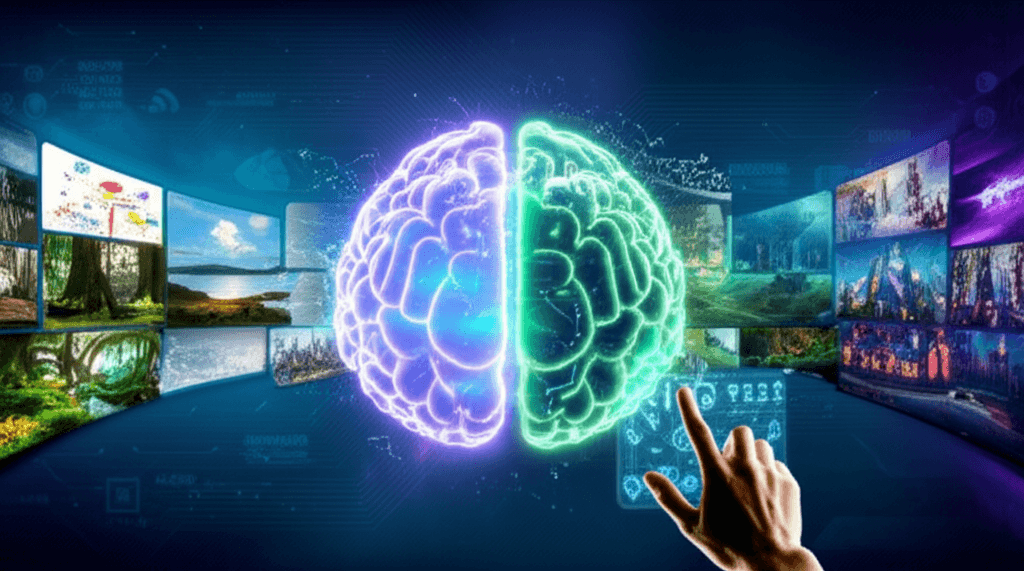AI Turns Imagination Into Playable Worlds, Revolutionizing Game Creation
This AI engine translates imagination into interactive reality, turning simple images into playable 3D worlds and empowering anyone to create.
August 22, 2025

A new technology is blurring the lines between imagination and interactive reality, allowing anyone to transform a simple drawing or photograph into a playable, three-dimensional video game world. Dynamics Lab has unveiled Mirage 2, the second iteration of its generative game world engine, a platform that can interpret 2D images and construct interactive experiences from them in real time. This development represents a significant step forward in the field of generative artificial intelligence, potentially lowering the barrier to game creation and altering the landscape of user-generated content forever. The core promise of Mirage 2 is its profound simplicity and creative freedom; users can upload anything from a child's crayon sketch to a landscape photo or a piece of concept art and watch as the AI engine builds a navigable world based on the image's content and style.[1][2][3]
The engine's capabilities extend beyond this initial act of creation. Once inside the generated world, players are not merely passive observers but active participants who can further shape their environment.[4] Through simple text commands, a user can modify the game world on the fly, introducing new elements or drastically altering the setting.[4] For example, a player exploring a generated fantasy forest could type a command to add surreal elements or transition the environment to a bustling cyberpunk city, with the engine attempting to render these changes in real time.[4] This interactive layer transforms the experience from a static generation into a dynamic, co-creative process between the user and the AI. Worlds created within Mirage 2 can also be saved and shared, allowing others to explore these unique, AI-generated spaces.[1] The entire experience is accessible through a web browser, eliminating the need for powerful hardware or complex software installations by streaming the game from the cloud.[4][5]
At its heart, Mirage 2 is powered by sophisticated AI architecture centered on large transformer-based models, similar in principle to the AI that drives advanced text and image generators.[6] These models have been trained on vast datasets that include a wide array of internet data and, crucially, extensive human gameplay footage.[6] This training allows the AI to understand not just the appearance of different environments but also the logic of movement and interaction within a playable space. When a user provides an input image, the system's specialized visual encoders analyze it, and the generative engine begins to construct a coherent 3D environment that can be explored.[6] The system then renders this world and streams it to the user's browser, aiming for a real-time frame rate while continuously generating new parts of the world as the player explores.[6][5] This process, which Dynamics Lab refers to as a "live AI World Model," enables an open-ended and theoretically infinite gameplay experience where each session is unique.[6]
While the launch of a publicly accessible demo for Mirage 2 is a notable achievement, especially from a small team of researchers, the technology in its current form is a glimpse of the future rather than a polished product.[1][4] Users of the demo have reported significant challenges with latency and control responsiveness, with delays between input and on-screen action being a common complaint.[7] Furthermore, the AI can struggle with maintaining visual and thematic consistency over longer play sessions.[7] The artistic style of a world generated from a specific image may "drift" back toward a more generic video game aesthetic over time, and the system appears to have a limited memory, sometimes forgetting details or regenerating areas inconsistently when a player looks away and then back.[7] In this regard, industry observers note that Mirage 2 lags behind the capabilities of unreleased competitors like Google DeepMind's Genie 3, which appears to offer more precise control and visual stability in private demonstrations.[1] The critical distinction, however, is that Mirage 2 is available for the public to experience firsthand, warts and all, serving as a tangible proof-of-concept for the future of interactive entertainment.[1][4]
The broader implications of technologies like Mirage 2 are profound, signaling a potential paradigm shift in how video games and interactive content are made.[8] For decades, game development has been the domain of skilled programmers, artists, and designers using complex tools. Generative engines could democratize this process, empowering anyone with an idea to create a playable experience through simple images and text prompts.[5] This has been dubbed "user-generated content 2.0," a move beyond creating mods or levels within an existing game to generating entire worlds from scratch.[6][8] For the professional game development industry, such tools could revolutionize the prototyping phase, allowing for the rapid visualization and testing of new concepts.[5] Developers could focus on high-level creative direction and game mechanics while the AI handles the laborious task of asset and environment creation.[8]
In conclusion, Mirage 2 stands as a landmark release in the rapidly evolving field of generative AI. While its current implementation is hampered by technical limitations such as latency and a lack of visual polish, its core proposition is revolutionary. By providing a tool that can translate static images into dynamic, interactive worlds, Dynamics Lab has offered a powerful and accessible look at a future where the boundary between player and creator dissolves. It is a system that prioritizes imagination above technical skill, suggesting a future where the creation of a new game world is as simple as uploading a drawing and beginning to explore. This shift from complex development to intuitive creation has the potential to unlock untold creative possibilities, fundamentally changing who can be a game maker and what a video game can be.
Sources
[2]
[3]
[4]
[5]
[6]
[8]